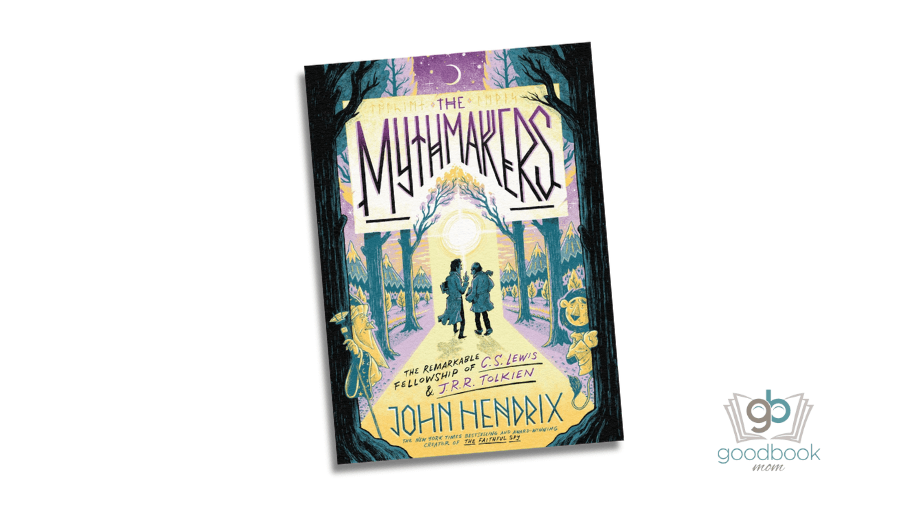
Summary
Many avid fantasy readers have heard about the friendship between C.S. Lewis and J.R.R. Tolkien. The Mythmakers: The Remarkable Fellowship of C.S. Lewis & J.R.R. Tolkien, like biographies that have come before, tells the true stories of these modern-era creative giants. But once their lives intersected at Oxford after World War I, The Mythmakers uses Lewis and Tolkien’s mutual creative inspiration as the springboard to delve into grand, expansive themes of faith, friendship, and the art of storytelling.
Part graphic novel, part biography, and part “speculative historical fiction”, Hendrix grounds the reader in a time and place: war-weary early 20th century Europe; academic life at Oxford; the Inklings’ literature-and-pipe-smoke-
Reading Level: 12+
Read Aloud Age: Because so much of the story is communicated through illustrations, The Mythmakers is best understood visually.
Mom Thoughts
John Hendrix’s latest offering, following his award-winning The Faithful Spy (based on the true story about Dietrich Bonhoeffer’s Nazi resistance) defies neat and tidy categorization. Mythmakers accomplishes what so few biographies can: make familiar men new again and prove their influence travels even further than we thought. But The Mythmakers also carries your imagination away, considering topics like the nature of the creative process and the bridge between stories and Christian faith. Aiding this journey of imagination is Hendrix’s signature illustrative style, which employs a minimal color palette and innovative use of the page for greater impact. The Mythmakers is as much a triumph for graphic design as it is for storytelling.
One of the most unique features of the book is a series of four “portals” scattered throughout the story that function as choose-your-own-adventure-
The Mythmakers reminds us that great young adult literature, like all great literature, points to redemption and the “greater country” we were made for.
One item of note: as Mr. Lion and Wizard enter “The Hall of Myth and Epic”, the Genesis story and Noah and the Ark are named in the hall, sharing a space with The Odyssey, the Epic of Gilgamesh, the Great Departure of Buddha, and Beowulf, along with many others. I believe that the author’s intent was not to characterize Bible stories as fiction but rather using the terms Myth and Epic as their proper literary genres. However, this nuance may be lost on a young reader. It might be helpful to read the book alongside your child and explain that while the Bible is also God’s Word, it also represents the best of ancient near eastern literature that can be appreciated and studied as such.
This review was written by Good Book Mom contributor, Nancy. To find out more about Nancy click HERE.
This post may contain affiliate links. Please read our disclaimer for more info.
Buy This Book
At A Glance
| Number of Chapters | Number of Pages |
|---|---|
| 7 with 4 optional “portals” | 224 |

